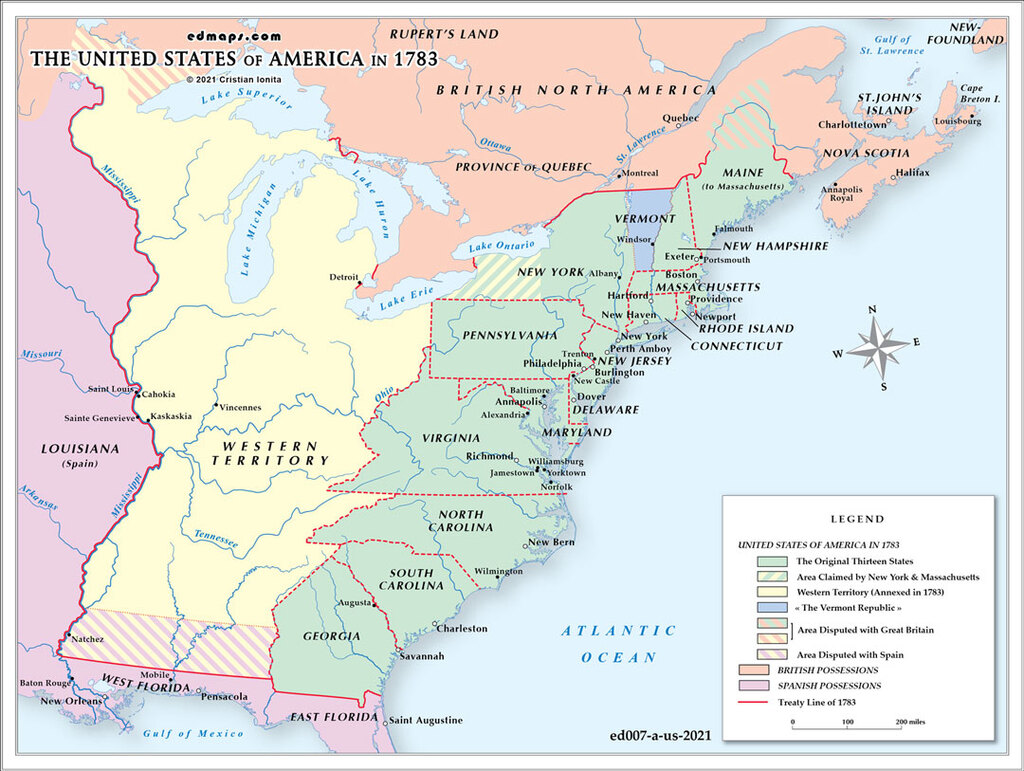

In 1783, following the Treaty of Paris that formally ended the American Revolutionary War, the United States emerged as a confederation of thirteen independent states with a complex territorial and administrative structure.
The core of the new nation consisted of the original thirteen colonies, now sovereign states: New Hampshire, Massachusetts, Rhode Island, Connecticut, New York, New Jersey, Pennsylvania, Delaware, Maryland, Virginia, North Carolina, South Carolina, and Georgia. Each state retained significant autonomy under the Articles of Confederation, which served as the nation's first governing document.
The treaty granted the United States vast western lands extending to the Mississippi River. However, territorial claims created immediate conflicts. Virginia claimed much of the present-day Midwest through its colonial charter, while other states like Connecticut, Massachusetts, and Georgia held overlapping western claims. These competing claims would require resolution through negotiation and cession to the federal government over the following decades.
Under the Articles of Confederation, the federal government possessed limited authority. The Continental Congress served as the central governing body but lacked power to tax, regulate interstate commerce, or enforce laws directly. Each state maintained its own constitution, legal system, and military forces.
Several territorial disputes remained contentious in 1783. The northern boundary with British Canada required further negotiation, while the southern and western boundaries with Spanish Florida remained unclear. The treaty established the Mississippi River as the western boundary, but Spanish control of New Orleans created future complications.
Notably absent from formal recognition were Native American nations, who controlled vast portions of the territory theoretically granted to the United States. Tribes like the Iroquois Confederacy, Cherokee, and numerous western nations maintained de facto control over much of their ancestral lands, creating an administrative reality that differed significantly from the legal framework established by the Treaty of Paris.

Lorem ipsum dolor sit amet, consectetuer adipiscing elit. Aenean commodo ligula eget dolor. Lorem ipsum dolor sit amet.

Lorem ipsum dolor sit amet, consectetuer adipiscing elit. Aenean commodo ligula eget dolor. Lorem ipsum dolor sit amet.

Lorem ipsum dolor sit amet, consectetuer adipiscing elit. Aenean commodo ligula eget dolor. Lorem ipsum dolor sit amet.